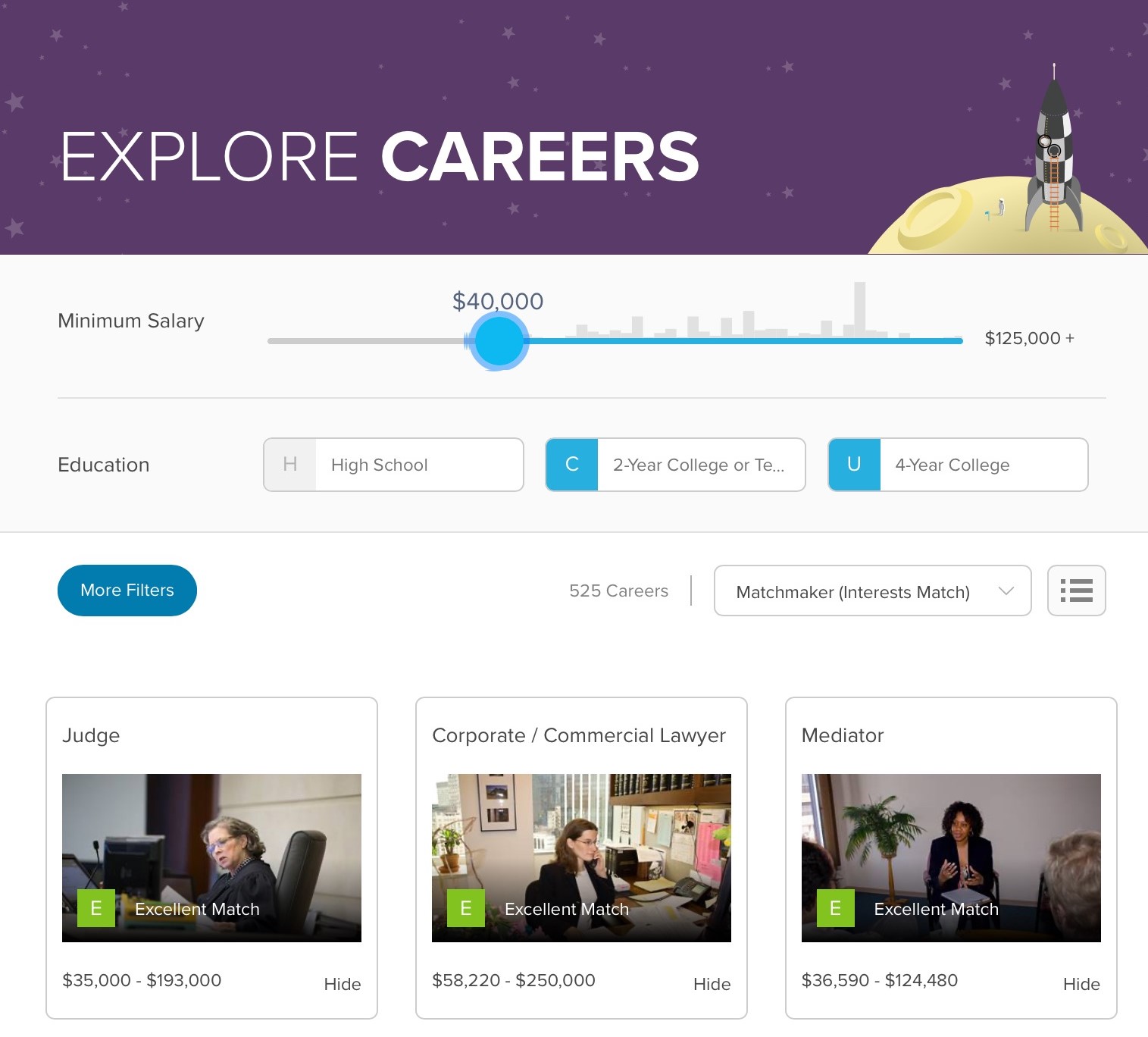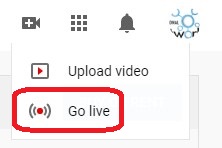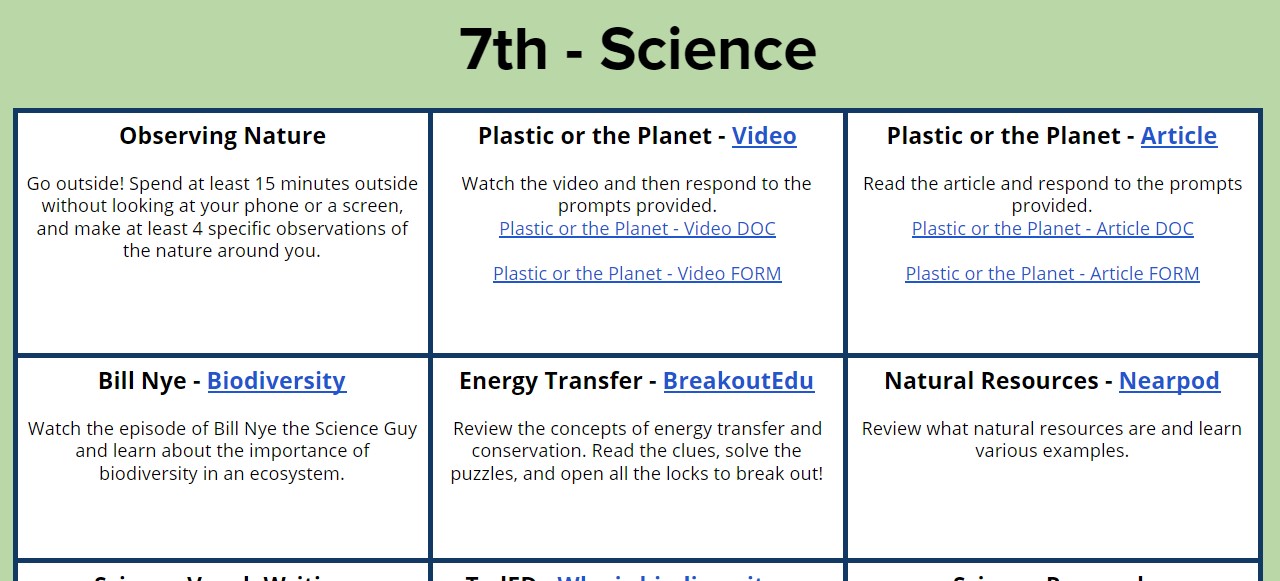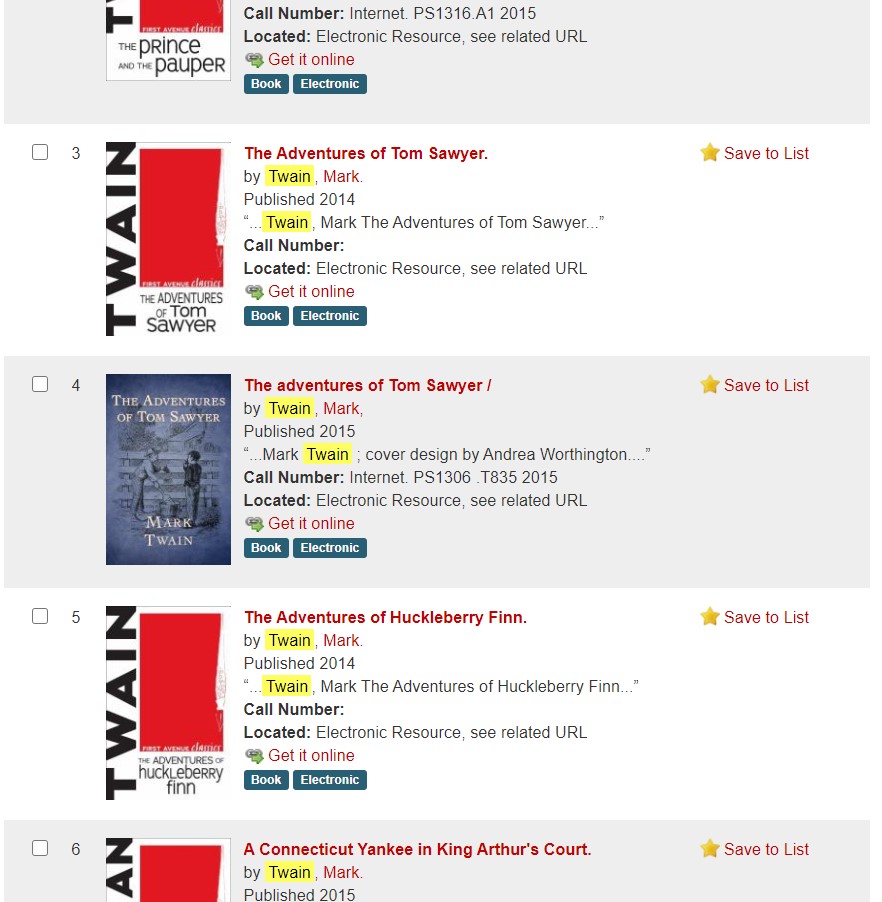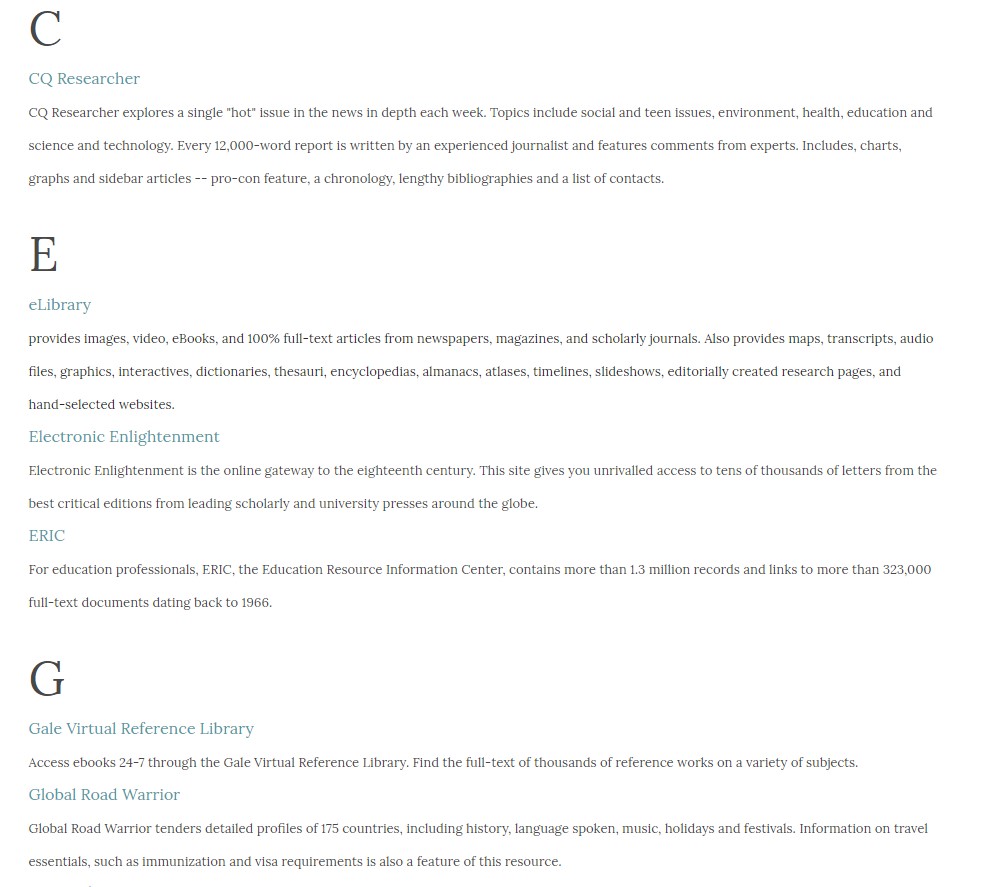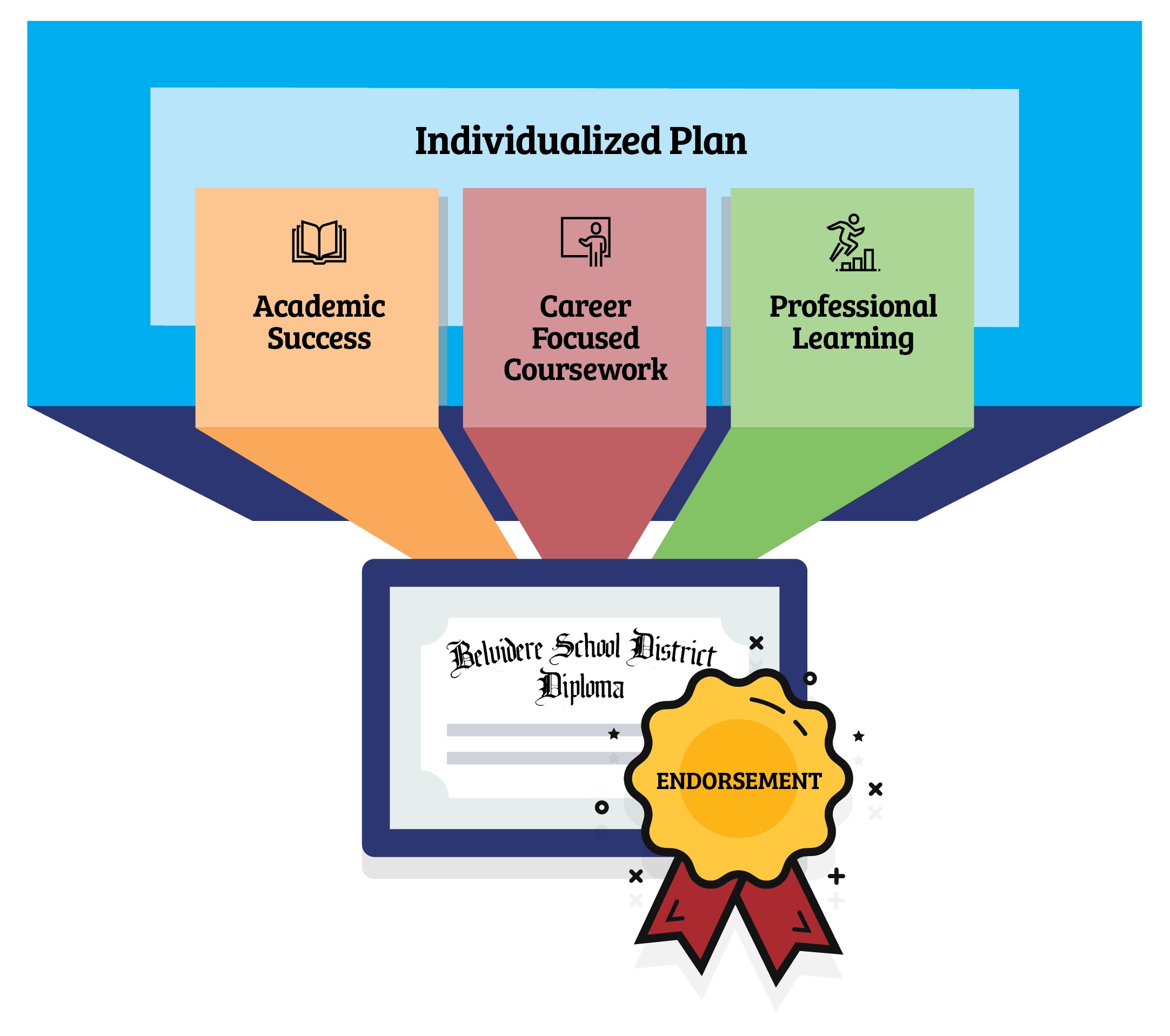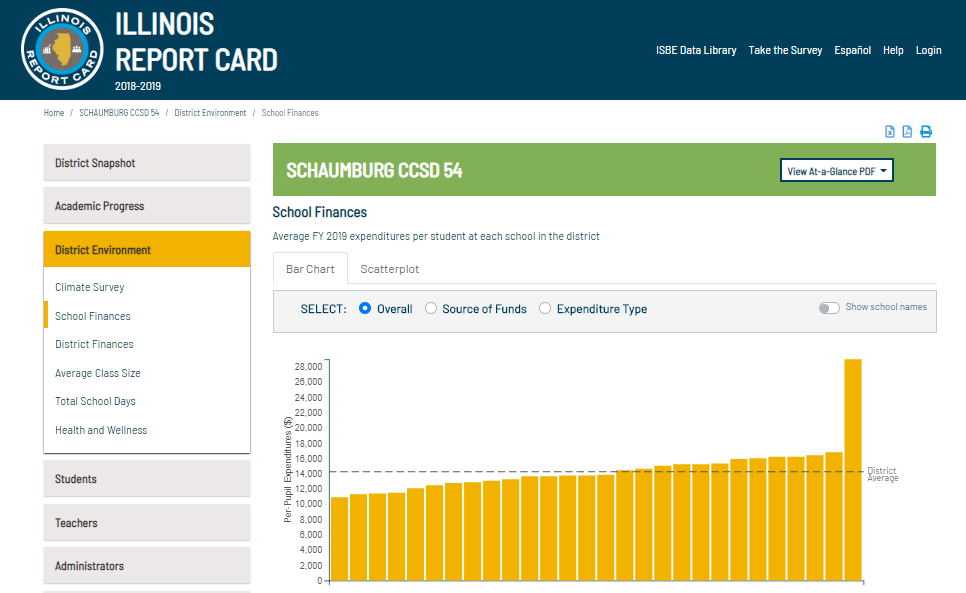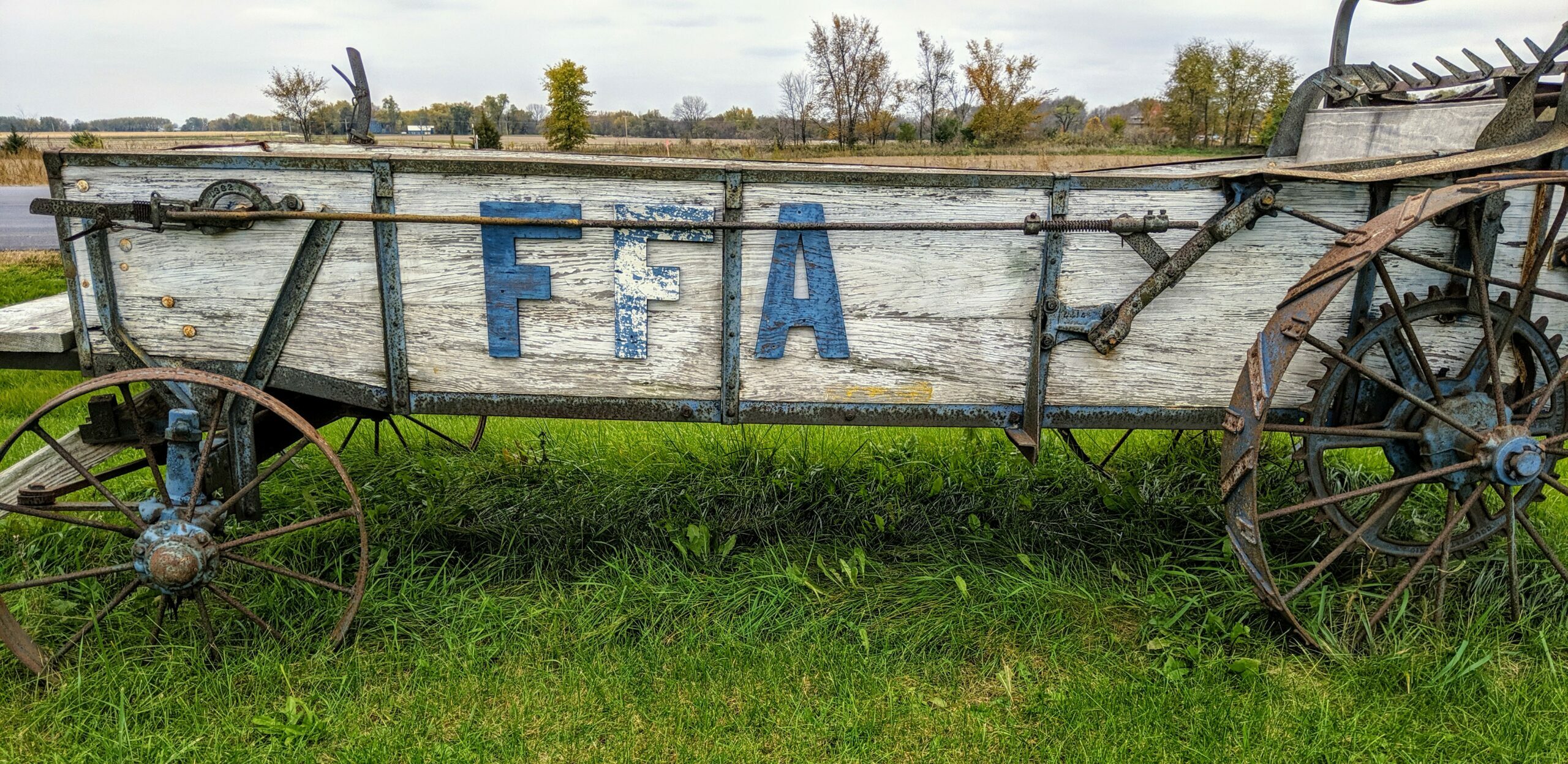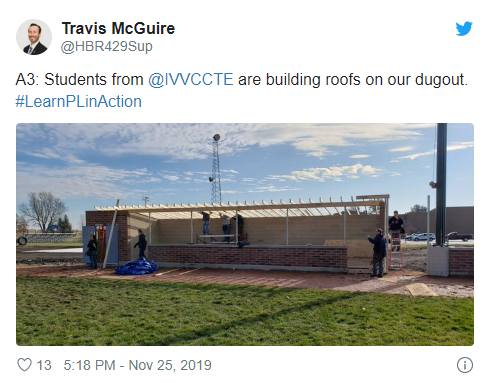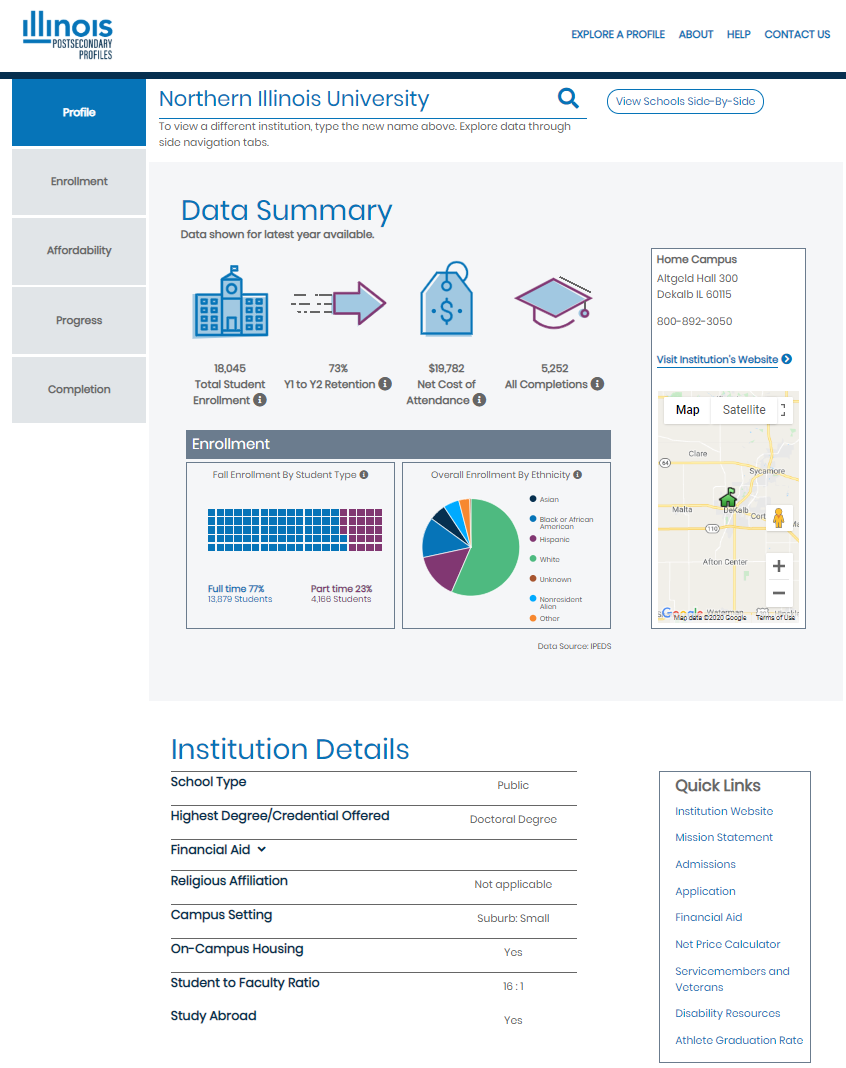Career Pathways Virtual Trailheads – Brian Pekron – Wind Farm Operations
 Since students cannot be engaging in face-to-face or on-site work-based learning experiences, we’re bringing people from a wide range of occupations to students remotely. These videos will allow students to learn about their work, the skills that are most important in their work, and to benefit from the advice that these professionals have to offer students.
Since students cannot be engaging in face-to-face or on-site work-based learning experiences, we’re bringing people from a wide range of occupations to students remotely. These videos will allow students to learn about their work, the skills that are most important in their work, and to benefit from the advice that these professionals have to offer students.
In this Career Pathways Virtual Trailheads episode, we interview Brian Pekron, who is in Wind Farm Operations. Originally earning Bachelor’s and Master’s degrees in Nuclear Engineering, Brian and a partner created a manufacturing company that designed an improved mixing nozzle for adhesives. Recently, Brain came back to working in the energy field with his new role in Wind Farming. In this role, Brian is involved in everything from planning to implementation, and his work ranges from managing financial projections and reports to working with suppliers and ensuring that wind turbines are fully operational.
Brian’s work in Wind Farm Operations and his range of job responsibilities keeps his work firmly rooted in both the Manufacturing, Engineering, Technology and Trades Career Pathway and the Business and Finance Career Pathway.
To be successful in his work, Brian has developed skills and competencies ranging from coding to deep understanding of the science behind energy to finance. For students, Brian speaks of the tremendous opportunities available in the fast-growing fields of wind and solar energy as well as of the need to gain exposure to many different careers while in school.
Watch this Career Pathways Virtual Trailheads interview with Brian Pekron about wind farm operations.
To keep up-to-date as new Career Pathways Virtual Trailheads videos are released:
- Follow the P-20 Network on Twitter
- Subscribe to the P-20 Network YouTube Channel
P-20 Network Virtual Spring Meeting
Our Spring 2020 P-20 Network Meeting was originally scheduled for April 23, 2020, at NIU Naperville. Due to the shelter-in-place order in Illinois as a result of COVID-19, the Spring P-20 Network Meeting has been moved to an asynchronous virtual event. While this format unfortunately requires us to miss out on the face-to-face discussions that are such a critical part of the P-20 Network, we are excited to share a number of the previously planned presentations as videos that can be viewed across the P-20 Network and beyond.
Each of the presentations below links to a video on the P-20 Network YouTube Channel.
- P-20 Network Meeting – Welcome & Introduction
- Jason Klein, Director of P-20 Initiatives, Northern Illinois University
- College & Career Readiness – Keynote
- Bridget French, Executive Director of College & Career Readiness, Rockford Public Schools
- College & Career Readiness – Working with Community and Industry Partners
- Melissa Byrne, Director of College & Career Readiness, St. Charles School District 303
- Gina Schuyler, Career & Technical Education/Community Partnerships Department Chair, Grayslake School District 127
- College & Career Readiness – Career Pathway Endorsements: Planning & Getting Started
- Nik Butenhoff, Director of Career Readiness, Belvidere School District 100
- Jill Hlavacek, Director of Innovation and Learning, Naperville Community Unit School District 203
- P-20 Network Dual Credit Think Tank Update
- Jason Klein, Director of P-20 Initiatives, Northern Illinois University
- Jenny Parker, Associate Vice Provost for Educator Licensure & Preparation, Northern Illinois University
- Illinois Postsecondary Profiles Website – Preview of Path 2–Exploring Occupations
- Alan Clemens, Director of Illinois Interactive Report Cards, Northern Illinois University
Transitional English – More info coming soon!
In the coming weeks, we also look forward to hosting a webinar about proposed competencies for Transitional English that have been developed by a group composed of stakeholders from across school districts, postsecondary institutions, and state agencies throughout Illinois.
Meeting Evaluation
After watching the videos, please take a few minutes to provide feedback using this short form on your P-20 Network experience as well as on the needs of your organization moving forward.
NIU P-20 Research & Data Collaborative
From statewide research projects to working with districts of all sizes on their research and data needs, the NIU P-20 Research & Data Collaborative is excited to offer a wide range of services and partnerships to advance knowledge and practice. Learn more about the NIU P-20 Research & Data Collaborative, and contact us for more information about specific projects.
For more information and to be part of the conversation of the P-20 Network:
- Subscribe for free to the every-other-week P-20 Network Newsletter
- Follow the P-20 Network on Twitter
Fall 2020 P-20 Network Meeting
Finally, plan now to attend the Fall 2020 P-20 Network Meeting on Thursday, October 1, 2020, at the Barsema Alumni & Visitors Center on-campus at Northern Illinois University in DeKalb.
Career Pathways Virtual Trailheads – Molly Levy – Fintech Product Management
 Since students cannot be engaging in face-to-face or on-site work-based learning experiences, we’re bringing people from a wide range of occupations to students remotely. These videos will allow students to learn about their work, the skills that are most important in their work, and to benefit from the advice that these professionals have to offer students.
Since students cannot be engaging in face-to-face or on-site work-based learning experiences, we’re bringing people from a wide range of occupations to students remotely. These videos will allow students to learn about their work, the skills that are most important in their work, and to benefit from the advice that these professionals have to offer students.
In this Career Pathways Virtual Trailheads video, we interview Molly Levy, who is Vice President for Product at Liberis, a Fintech company working with small businesses. Fintech refers to the sub-sector of companies that focus on developing and implementing information technology solutions from hardware to software that create new or enhance existing financial products. Molly, who is from Chicago’s Northern Suburbs but now lives and works in London in the United Kingdom, leads the team that is responsible for the creation and ongoing development of products at Liberis, a company which focuses their efforts of providing capital to small businesses.
As a leader of a Fintech company, Molly’s current role as the Vice President for Product as being in both the Business & Finance Career Pathway as well as the Information Technology Career Pathway.
While Molly grew up in Suburban Chicago, from there, her career has taken her to San Francisco and now to London, and through these experiences Molly has learned a great deal about the importance of being flexible and about being able to work with others from different cultures, which Molly discusses in this video. Molly has learned about and stresses the importance of the feedback loop. In the case of her company that feedback loop is specifically between customers and the design team, and it results in an iterative design process through which products are always being improved. Molly’s key advice to current students to find value in all of your work place experiences and to view them as opportunities to learn and improve.
Watch this interview with Molly Levy, Vice President-Product at Liberis.
To keep up-to-date as new Career Pathways Virtual Trailheads videos are released:
- Follow the P-20 Network on Twitter
- Subscribe to the P-20 Network YouTube Channel
Career Pathways Virtual Trailheads – Lisa Sharp – Architect
 Since students cannot be engaging in face-to-face or on-site work-based learning experiences, we’re bringing people from a wide range of occupations to students remotely. These videos will allow students to learn about their work, the skills that are most important in their work, and to benefit from the advice that these professionals have to offer students.
Since students cannot be engaging in face-to-face or on-site work-based learning experiences, we’re bringing people from a wide range of occupations to students remotely. These videos will allow students to learn about their work, the skills that are most important in their work, and to benefit from the advice that these professionals have to offer students.
In this Career Pathways Virtual Trailheads video, we interview Lisa Sharp, an architect who owns her own architecture firm based out of DeKalb, Illinois, USA. Lisa provides an overview of the workflow of architecture from obtaining work through the design and planning phases and, of course, on to construction. With experience doing a wide range of work, including the restoration of the historic Egyptian Theater in Downtown DeKalb, Lisa is able to provide students with an understanding of all aspects of being an architect.
As an architect, Lisa works in the Manufacturing, Engineering, Technology, and Trades Career Pathway. As the owner of her own firm, her job also exists in the Business and Finance Career Pathway.
From a very young age (6 years old!), Lisa remembers wanting to be an architect. She has always liked drawing, math, and being with people – all of which are necessary to be successful as an architect. She describes the role of an architect as being like the conductor of a band as one works with other professionals across a broad range of job types from engineers to interior designer to construction workers. Despite the fact that 98% of her work is completed on a computer today, Lisa still stresses that drawing is a critical skill for success, and she says it is also very important to have a strong imagination and to be very good at thinking ahead and planning.
Watch this interview with architect Lisa Sharp.
To keep up-to-date as new Career Pathways Virtual Trailheads videos are released:
- Follow the P-20 Network on Twitter
- Subscribe to the P-20 Network YouTube Channel
Career Pathways Virtual Trailheads – Desiree Battaglia – Communications-Media Relations
 Since students cannot be engaging in face-to-face or on-site work-based learning experiences, we’re bringing people from a wide range of occupations to students remotely. These videos will allow students to learn about their work, the skills that are most important in their work, and to benefit from the advice that these professionals have to offer students.
Since students cannot be engaging in face-to-face or on-site work-based learning experiences, we’re bringing people from a wide range of occupations to students remotely. These videos will allow students to learn about their work, the skills that are most important in their work, and to benefit from the advice that these professionals have to offer students.
In this Career Pathways Virtual Trailheads video, we interview Desiree Battaglia, a media relations specialist at Northwestern Medicine. Desiree recently moved into this role after serving as the Manager of Public Relations and Corporate Communications for Wilton Brands. In both of these roles, Desiree has worked with everything from media outlets ranging from television stations to magazines as she has worked to tell stories for each of these organizations while inspiring others as they engage with that work.
As a communications specialist, Desiree’s work would be classified as being in the Human & Public Services Career Pathway, though currently her work is also directly related to the Health Science & Technology Career Pathway as the stories she is telling are that of a major healthcare and hospital network in Chicagoland.
During the interview, Desiree shared her experiences in serving as a member of the staff of the school newspaper in high school, and then, she worked at both the newspaper and the television station while attending Northern Illinois University. Even prior to those experiences, she always had a love for making speeches and doing presentations, and these personal interests and school experiences all aligned perfectly with her career. From this, she advises students to turn their “passion into a career” while also telling students that relationship-building, follow-through, writing and communications skills, and being resilient are all critical to career success as a communications professional.
Watch this interview with media relations specialist Desiree Smith.
To keep up-to-date as new Career Pathways Virtual Trailheads videos are released:
- Follow the P-20 Network on Twitter
- Subscribe to the P-20 Network YouTube Channel
Career Pathways Virtual Trailheads – Laura Rice – Microbiologist
 Since students cannot be engaging in face-to-face or on-site work-based learning experiences, we’re bringing people from a wide range of occupations to students remotely. These videos will allow students to learn about their work, the skills that are most important in their work, and to benefit from the advice that these professionals have to offer students.
Since students cannot be engaging in face-to-face or on-site work-based learning experiences, we’re bringing people from a wide range of occupations to students remotely. These videos will allow students to learn about their work, the skills that are most important in their work, and to benefit from the advice that these professionals have to offer students.
In this Career Pathways Virtual Trailheads video, we interview Laura Rice, a microbiologist who holds a PhD., has over a dozen patents, and has published dozens of technical articles. Laura works for the Nalco Water division of Ecolab, a very large international corporation. In Laura’s role, she leads teams that solve problems in the Paper and Pulp industry to ensure that machines can work efficiently in creating everything from office paper to the cardboard used in pizza boxes. Through these efforts, there is less waste, which not only increases profitability for companies, but it also results in environmental benefits as a greater percentage of the trees harvested for paper turn into product rather than end up wasted.
As a microbiologist working in the paper industry, Laura’s work would be classified as being in either the Agriculture Food, and Natural Resources and/or the Manufacturing, Engineering, Technology, and Trades Career Pathways.
During the interview, Laura talks about being a shy student who was afraid to take the risk to ask questions in class, and she encourages all students to ask teachers at all levels for help. She highlights many of the essential skills that are vital to success in her workplace stressing that it is important to be a problem solver and to be persistent in your efforts. Above all else, Laura tells students that collaboration and communication are critical each day. When thinking about entry level positions that students will have they begin their careers, Laura reminds students that regardless of the task on which they are working, it is important to understand why it is important and to always welcome feedback as an opportunity to learn and improve.
Watch this interview with microbiologist Laura Rice.
To keep up-to-date as new Career Pathways Virtual Trailheads videos are released:
- Follow the P-20 Network on Twitter
- Subscribe to the P-20 Network YouTube Channel
Career Pathways Virtual Trailheads – Arthur Mingo – Attorney
 Since students cannot be engaging in face-to-face or on-site work-based learning experiences, we’re bringing people from a wide range of occupations to students remotely. These videos will allow students to learn about their work, the skills that are most important in their work, and to benefit from the advice that these professionals have to offer students.
Since students cannot be engaging in face-to-face or on-site work-based learning experiences, we’re bringing people from a wide range of occupations to students remotely. These videos will allow students to learn about their work, the skills that are most important in their work, and to benefit from the advice that these professionals have to offer students.
In this Career Pathways Virtual Trailheads video, we interview Arthur Mingo, an attorney who has recently started his own practice in Chicagoland. Arthur goes into great deal about law school teaching students to think like attorneys and about the process of taking and passing the Bar Exam. Arthur also talks about how, like a doctor who is a general practitioner or family doctor, an attorney with a new, small practice will likely take a wide variety of cases before possibly specializing in a particular area of legal work.
As an attorney, Arthur’s work would be classified as being in the Human and Public Services Career Pathway.
Arthur stresses a number of important points to students when considering becoming an attorney. First, Arthur emphasizes that the work of most attorneys most of the time does not look like it appears on television and in movies. Second, Arthur points out that while his degree from the Law School at Southern Illinois University might not be considered as prestigious as an Ivy League Law School, he learned from the same books and got a very strong legal education while also earning scholarships and strengthening his financial future.
Arthur also notes that being argumentative is not the most important skill to becoming a good attorney. Rather, it is important that one truly listens to their clients, returns phone calls, and is a strong reader and writer.
Learn more about what it’s like to be an attorney by watching this interview with Arthur Mingo.
To keep up-to-date as new Career Pathways Virtual Trailheads videos are released:
- Follow the P-20 Network on Twitter
- Subscribe to the P-20 Network YouTube Channel
Career Pathways Virtual Trailheads – Elizabeth Stanley – Broadway Star
 Since students cannot be engaging in face-to-face or on-site work-based learning experiences, we’re bringing people from a wide range of occupations to students remotely. These videos will allow students to learn about their work, the skills that are most important in their work, and to benefit from the advice that these professionals have to offer students.
Since students cannot be engaging in face-to-face or on-site work-based learning experiences, we’re bringing people from a wide range of occupations to students remotely. These videos will allow students to learn about their work, the skills that are most important in their work, and to benefit from the advice that these professionals have to offer students.
In this Career Pathways Virtual Trailheads video, we interview Elizabeth Stanley, who is currently starring in the production of Jagged Little Pill on Broadway in New York City. Elizabeth grew up in Western Illinois attending Camp Point Central High School, and she holds a Bachelor’s Degree from Indiana University. In addition to singing, dancing, and acting in live theater productions, Elizabeth has appeared in many television shows. From her work in regional theater to the biggest stages in the United States, Elizabeth’s job is her dream job and a dream for many. In this interview, though, Elizabeth also stresses all of the related careers that are necessary to create and maintain live theater, providing opportunities for people with all kinds of interests and skills to be involved in a career in the Arts.
As an actress, Elizabeth’s work would be classified as being in the Arts & Communications Career Pathway.
In addition to describing what life looks while performers are looking for jobs as well as once they are in a production, Elizabeth offers a number of key tips for students that are not only important for those considering a career in the Arts but that align with the Essential Skills and are relevant to all Career Pathways.
- Be as prepared as possible
- Be Self-Motivated
- Be resilient and persevere; Develop one’s self-esteem
- Be thoughtful with one’s finances and save regularly
Watch our P-20 Network interview with actress Elizabeth Stanley on YouTube.
To keep up-to-date as new Career Pathways Virtual Trailheads videos are released:
- Follow the P-20 Network on Twitter
- Subscribe to the P-20 Network YouTube Channel
Career Pathways Virtual Trailheads – Brigette Wolf – Snack Food Innovator & Leader
 Since students cannot be engaging in face-to-face or on-site work-based learning experiences, we’re bringing people from a wide range of occupations to students remotely. These videos will allow students to learn about their work, the skills that are most important in their work, and to benefit from the advice that these professionals have to offer students.
Since students cannot be engaging in face-to-face or on-site work-based learning experiences, we’re bringing people from a wide range of occupations to students remotely. These videos will allow students to learn about their work, the skills that are most important in their work, and to benefit from the advice that these professionals have to offer students.
In this Career Pathways Virtual Trailheads video, we interview Brigette Wolf, the Head of Snack Futures Innovation at Mondelez International. In Brigette’s role, she works with and learns from customers and retailers in order to understand their needs, and she leads a diverse team that seeks to create new products that will be exciting to consumers with an emphasis on new ideas and sustainability. Brigette also provides her advice to students about beginning their own career journeys.
As an executive in the food industry, Brigette’s work would be classified as being in either the Agriculture Food, and Natural Resources and/or the Business/Finance Career Pathways.
Brigette specifically identifies that critical thinking, the ability to listen, and being good at asking questions are all essential skills that are necessary in her work. In a job that routinely sees her traveling around the world, literally to different continents each week and back home on the weekends, she also must be able to work with both teammates and customers from around the world. Brigette has identified that having the “agility to learn” is vital to her ongoing success, and like each of the Career Pathways Virtual Trailheads guests before her, she cites work ethic is being a must-have characteristic to achieve in her career.
Click here to watch this video on YouTube.
To keep up-to-date as new Career Pathways Virtual Trailheads videos are released:
- Follow the P-20 Network on Twitter
- Subscribe to the P-20 Network YouTube Channel
Career Pathways Virtual Trailheads – Jim Daly – Chemist & Corporate Leader
 Since students cannot be engaging in face-to-face or on-site work-based learning experiences, we’re bringing people from a wide range of occupations to students remotely. These videos will allow students to learn about their work, the skills that are most important in their work, and to benefit from the advice that these professionals have to offer students.
Since students cannot be engaging in face-to-face or on-site work-based learning experiences, we’re bringing people from a wide range of occupations to students remotely. These videos will allow students to learn about their work, the skills that are most important in their work, and to benefit from the advice that these professionals have to offer students.
In this Career Pathways Virtual Trailheads video, we interview Jim Daly, the Vice President of Global FloraLife and Corporate Research at Smithers-Oasis. Among other products, FloraLife is the company behind the packets of flower food that come with bouqets of flowers at the supermarket, and in this video, Jim talks about everything from the science behind extending the storage life of apples to the process of innovation.
As a chemist-turned-executive, Jim’s work would be classified as being in either the Agriculture Food, and Natural Resources and/or the Business/Finance Career Pathways.
Jim stresses the importance of consistent hard work over a long period of time as a key to success in any career. He talks about learning as much as possible when you are young and taking advantage of formal learning opportunities, so you can build upon those once you are in the workplace. Jim also emphasizes how exciting it is to innovate and create while also stating that, in his experience, leading people is more complex than solving problems with chemicals.
Click here to watch this video on YouTube.
To keep up-to-date as new Career Pathways Virtual Trailheads videos are released:
- Follow the P-20 Network on Twitter
- Subscribe to the P-20 Network YouTube Channel
Career Pathways Virtual Trailheads – Marco Casalaina – IT Leader & AI Innovator
 Since students cannot be engaging in face-to-face or on-site work-based learning experiences, we’re bringing people from a wide range of occupations to students remotely. These videos will allow students to learn about their work, the skills that are most important in their work, and to benefit from the advice that these professionals have to offer students.
Since students cannot be engaging in face-to-face or on-site work-based learning experiences, we’re bringing people from a wide range of occupations to students remotely. These videos will allow students to learn about their work, the skills that are most important in their work, and to benefit from the advice that these professionals have to offer students.
In this Career Pathways Virtual Trailheads video, we interview Marco Casalaina, the Senior Vice President – Product – Einstein at Salesforce.com. Marco is in charge of a global team working on Salesforce’s Artificial Intelligence (AI) efforts, and he talks about his work, the most important skills for himself and his team members, and provides advice to students about their own career pathways.
As a computer scientist and executive, Marco’s work would be classified as being in either the Information Technology and/or the Business/Finance Career Pathways.
Marco also discusses the importance of cross-cultural competence as he leads a global team with offices in the United Stands, France, Israel, and India, and he identifies two key skills for students to develop regardless of their particular career interests – communication and creativity.
Click here to watch the video on YouTube.
To keep up-to-date as new Career Pathways Virtual Trailheads videos are released:
- Follow the P-20 Network on Twitter
- Subscribe to the P-20 Network YouTube Channel
Career Pathways – Virtual Trailheads – Exploring Careers Online
With the unprecedented move to remote learning necessary about the shelter-in-place orders tied to COVID-19, the P-20 Network had previously offered suggestions about how career exploration could continue while students are learning at home. From the dialogue that this post generated, we are excited to announce that we are launching a new series on YouTube – Career Pathways Virtual Trailheads.
Since students cannot be engaging in face-to-face or on-site work-based learning experiences, we’re excited to bring people from a wide range of occupations across the Career Pathways to students remotely. These videos will allow students to learn about their work, the skills that are most important in their work each day, and to benefit from the advice that these professionals have to offer students.
Teachers can benefit from the Career Pathways Virtual Trailheads videos in two ways. First, these videos serve as a resource that can be used as we engage students in remote learning in the short-term as well as in online, blended, or traditional learning environments in the future. Second, these videos can provide brief virtual externship experiences for teachers to hear about careers and workplaces outside of education in order to ensure that our instruction is as relevant and engaging as possible for our students and their futures.
For each interview, we will post a corresponding blog post. Videos and blog posts will begin to be shared during the week of March 30, 2020. To keep up-to-date:
- Follow the P-20 Network on Twitter
- Subscribe to the P-20 Network YouTube Channel
Spring 2020 Meeting – Moving Online
Our Spring 2020 P-20 Network Meeting was originally scheduled for April 23rd at NIU Naperville. Due to the continued shelter-in-place order in Illinois, the Spring P-20 Network Meeting will not be held face-to-face on April 23rd.
We are excited to share that we will have many of our presentations available as videos online, and we plan to release these videos on April 23rd. The videos will be publicly available for your organizations to view. More details will be shared as we get closer to April 23rd.
March 2020Dual Credit and Advanced Placement while Learning at Home
UPDATED – 27 March 2020 – Additional guidance about dual credit classes from ISBE, ICCB, and IBHE has been released and is available online here. Everything in this new guidance aligns with the “Dual Credit” section below, and it offers additional specific suggestions for ensuring students can access online coursework as well as for individual plans for students to complete the coursework and for late withdrawals if necessary.
With all Illinois schools being closed for on-site instruction due to Governor Pritzker’s Executive Orders (Executive Order 2020-10), school districts and community colleges have made a tremendous shift to distance/remote learning on a never-seen-before scale in a a matter of days. While there is a great deal of flexibility that may be on offer in a variety of classes, Dual Credit and Advanced Placement courses present unique challenges–namely, that their successful completion will also designate to other (future) institutions that the student has mastered specific skills and concepts.
Advanced Placement Changes for Spring 2020
On Friday, March 20, 2020, The College Board, the not-for-profit organization that administers the Advanced Placement (AP) program and creates, implements, and scores the AP Tests, made announcements about its plans to modify AP Testing for Spring 2020. Key elements of this decision include:
- 45-minute, one-question free response tests in place of multiple choice plus free response tests that take hours to complete
- Limited curricular scope that should include only what was already covered
- Opportunity to cancel participation free-of-charge if students wish
- Online testing as well as the option of photographing and sending a handwritten response (with support from College Board to help ensure access to both devices and the Internet for students who do not currently have both at home)
Additionally, beginning on March 25th, online support led by teachers will be available for students from The College Board via the AP YouTube Channel. A full schedule and resources can be found here under the header Free AP Review Classes.
Dual Credit Classes
In keeping with the spirit of Illinois’ Dual Credit Quality Act and the Model Partnership Agreement, it is necessary for the community college or university offering the postsecondary credit and the school district that is offering and teaching the dual credit course to agree upon the standards and criteria necessary to continue with the awarding of postsecondary credit to students.
With school districts, community colleges, and four-year universities all moving to online and remote learning environments, there is a common basis for these discussions and decisions. In gathering feedback from school districts and community colleges throughout the P-20 Network and who are serving as leaders on these issues through the P-20 Network’s Dual Credit Think Tank, the following steps are suggested between school districts and postsecondary institutions as best practices at this time:
- Discuss – Be sure to open the lines of communications about what is expected with regards to curriculum, how it is delivered instructionally, and how the skills and concepts will be assessed.
- Make similar adjustments – As universities and colleges make adjustments to curriculum with the move to learning at home, those changes should be communicated to school districts, and it is reasonable to expect the school districts to make the same adjustments rather than simply expecting them to continue on as originally planned. It is critical that the course objectives are clear and consistent across school districts and the higher education institution, and that all students are being supported with meeting those objectives.
- Trust school districts – Just as face-to-face courses in higher education have moved online, school districts will need to do the same with their dual credit courses like all of their classes. Additionally, teachers in school district settings are certified by the state as a result of their strong background in pedagogical coursework and their student teaching experience, so they should be as well-prepared as faculty in postsecondary institutions to make these adjustments.
The Illinois State Board of Education (ISBE) and the Illinois Community College Board (ICCB), like other state agencies in Illinois and around the United States, are working through these policy challenges and seeking to provide clear guidance as quickly as possible. If guidance specific to Dual Credit is issued by either or both of these agencies, that should be followed. (It will very likely be issued by both jointly.) At the moment, ISBE has told school districts in its most recent March 23rd Guidance Document:
March 2020Please work with your community college partners to ensure that students will not be penalized by these circumstances. ISBE and ICCB are working on additional coordinated guidance.
Exploring Careers while Learning at Home
We’re collecting questions about Learning at Home from teachers at all levels, and we’ll be working with experts to help get these questions answered. If you have questions, please provide them here.
Websites listed in this post are listed as examples because they are already in common use in Illinois. There is no endorsement of these companies or their services by the P-20 Network or Northern Illinois University.
Along with the physical closure of schools, work-based learning experiences have also been stopped for students. From its March 16, 2020, guidance document, the Illinois State Board of Education (ISBE) clarified that students cannot participate in work-based learning experiences in the field with workplace partners.
Does this mean that students cannot meaningfully engage in exploring careers while learning at home? Actually, E-Learning presents a wonderful opportunity to engage in further career exploration for students. Ideas for learning more about careers while learning at home include:
- Using online tools to conduct their own research about careers about which they would like to learn more, including what type of postsecondary education to obtain a position in the career, what the workplace environment looks and feels like, how much money one is able to earn both when new in the career and later with more experience, and most importantly, how the career matches with the students’ personal and career interests as well as with regional occupational needs. If your school district uses a tool like Xello or YouScience, now is a great time to have students dive into their results and do some additional exploration.
- Students can also conduct interviews or do additional research into the more behind-the-scenes elements of different careers in which they might be interested to fully understand what those careers entail on a daily basis. In many cases, students have a deeper understanding of the careers of their parents or other adult family members as well as teachers. Beyond that, most students do not see the daily inner-workings of most careers. Movies and television not only leave out most careers and focus on specifically high-profile careers in very dramatic ways, such as law enforcement, paramedics, and frontline medical professions, such as doctors and nurses. Even with the large number of movies and television shows focused on these careers, large portions of the daily work routine in those fields are typically left out. Hours of documentation and paperwork each day is part of real life, but it does not make for dramatic viewing. Even when other careers are highlighted in movies and television, such as the scene below from Apollo 13 that shows engineers tackling a life-threatening problem, leave out the years of detailed, mundane creation and testing that these same engineers did prior to the launch of Apollo 13.
- Use the curriculum of your course as a jump-off for career exploration – As we replace some of the face-to-face collaborative activities, labs, and other lessons that we would have been doing with in-person teaching that we have not yet figured out how to effectively move online or to students’ homes, take advantage of this opportunity to use your curriculum as a jumping off point for further exploration. Certainly, it is a great opportunity to explore the curriculum further and/or in unique personalized ways with independent research and creative, original products. It is also a great opportunity for students to explore careers related to this curriculum. While this may be a teacher-initiated career exploration, there is a great deal of room for individual student choice within this work as well as for students to create a wide range of products that can inform other students in other places and in the future about career options. This also a great opportunity for community partners of local school districts to provide information about their careers via video chats using tools like YouTube Live. (It takes 24 hours for YouTube to verify an account to allow it to broadcast live, so one does need to plan in advance).
- Remote College & Career Counseling – Despite the fact that nearly all teachers and staff and counselors and advisors are working from home, in some ways, this is a better opportunity than a normal March or April to provide students with during-the-day college and career counseling. In many cases, engaging with students and parents together may be easier than it would normally be, as well. Remote college and career counseling can certainly take advantage of today’s technological tools, live video chat through Google Hangouts Meet, Microsoft Teams, or some other tool, but it can also take place via a phone call, enabling nearly all students and families to take advantage of this opportunity. In the example below from Maine West High School, Maine Township High School District 207 staff members walk students and families through the steps that they have created, and which others can replicate, to provide remote college and career counseling. (It is important to note that, in addition to the video here, the slide deck is publicly available and has been widely shared on social media to engage students, such as this Instagram post from Maine East High School.)
Learning at Home – The importance of student choice
We’re collecting questions about Learning at Home from teachers at all levels, and we’ll be working with experts to help get these questions answered. If you have questions, please provide them here.
Websites listed in this post are listed as examples because they are already in common use in Illinois. There is no endorsement of these companies or their services by the P-20 Network or Northern Illinois University.
While covering the curriculum and standards is an essential part of developing instructional units and lessons for students, all students do not need to experience the curriculum and the standards in the exact same way. Student choice in any learning environment can be a key to increased student motivation, increased creation/production, and deeper, longer lasting learning.
If there is only one thing that each teacher who is creating E-Learning units and lessons should do, it is create opportunities for students to choose key elements of their learning. Choice may revolve around the products students create and/or the resources and processes that they use to learn the concepts, content, and skills.
Student choice can be as simple as allowing students to choose their own reading material – broadly or on a specific topic. Access to the Internet along with a device does significantly increase the amount of choice that students might have, but even without the Internet, it’s possible to provide students with options in their work. For example, schools that are still in session prior to the required closure beginning on Tuesday, March 17th and that have library books available for check-out can allow students to check out books based on whatever topics they would like, including fiction or non-fiction books.
Products
Creating open-ended projects that allow students to be assessed similarly but on a variety of different products. Products might range from a video or podcast that students create to a more traditional academic paper to a presentation (to their classmates or a more authentic audience, such as a school board or municipal board) to a persuasive policy letter sent to a legislator or bureaucrat. By moving away from a traditional test as an end-of-unit summative assessment, students who will have more opportunities to be creative and engage with their learning in a manner of their own choosing. Such projects also provide outstanding opportunities through academic coursework and even via E-Learning for students to learn and practice the Cross-Sector Essential Employability Competencies. (See page 6 of this document on the Illinois College and Career Pathway Endorsements.)
Even a series of smaller tasks can still provide students with choice as evidenced by this example of a Choice Board pictured below. This choice board had a total of 9 activities, and students are required to do 4 of them – 1 per day over 4 days. This provides students with a significant level of choice as they will do less than half of the activities offered to them. In this particular board, there is a significant emphasis on traditional E-Learning activities that require a device and a robust Internet and wireless network connection. In many cases, these prerequisites may be a barrier to completing the activities. As always, it is critical that educators know their students and design accordingly.
Assessment on this wide range of products will typically be based on a rubric or checklist that articulates the appropriate performance levels of content knowledge and skill attainment on a specific project. It is important to bear in mind that E-Learning activities should be activities that students can complete independently or with remote teacher support–rather than parent support. Likewise, assessment should consider what level of performance students can be expected to achieve independently via E-Learning. Obviously, at the high school and postsecondary levels, there are entire courses that have moved to E-Learning, and like with any class, in some cases, students learn a significant amount and are very engaged, and in other cases, that is not so. As teachers embark on E-Learning and are new to leading students through E-Learning and have not necessarily considered teaching through E-Learning until days before needing to implement, there will be significant learning for everyone. The best advice in this case is to be flexible and realistic with the expectations that are built into assessments as one develops experience with the structure and process and as one collaborates with colleagues on seeing the results of these efforts.
Resources and processes for learning
When connecting to curriculum and standards to current events, a wide range of resources are available to students to support their learning. By connecting curriculum to current events, news sites, while in some cases limited by paywall access, provide a wealth of options for students to read, watch, listen to, write about, and integrate into their own thoughts. Traditional news sites from major media companies are accessible to students as our platforms designed specifically for schools and for students, such as newsela, which is pictured below. Inherent in everything from traditional newspapers to modern media websites is that there are a wide range of articles from which students can choose to engage.
Similarly, if your students have access to electronic books through your school library and through a service like myON or Overdrive. Likewise, if students have public library cards, there are also electronic books available from many public libraries. For accessing both fiction and non-fiction books, having access to electronic books provides tremendous choice to students regarding what they read and learn. For example, the image below represents just a small slice of books available from one library by one author.
Similar to the range of options available for choice with electronic books, libraries that are able to subscribe to online databases offer students a wide range of articles from which they can learn. In many schools, it is common to see students using such databases as early as the intermediate grade levels. As the teacher of an E-Learning class, it may be necessary to provide instruction to students on how best to use a particular database and/or which databases will be most useful for which purposes. This is also a great opportunity to utilize instructional resources that can be developed by school librarians in one’s own school or that have been published across the Internet.
Finally, when students are conducting their own research, they will not only be able to utilize electronic books and library databases, but they will also be able to take advantage of an Internet full of websites. As students come across different websites, there are inherent challenges for students and teachers ranging from the text complexity of the website to the validity of the information on the website. Due to these factors as well as the need to help students stay on-track with their progress within an independent or collaborative research project, ongoing coaching from the teacher is necessary. Fortunately, online text and video chat tools help make this somewhat manageable and more like these same instructional strategies would be in a face-to-face classroom.
March 2020Learning at Home – Tips for Video Meetings
We’re collecting questions about Learning at Home from teachers at all levels, and we’ll be working with experts to help get these questions answered. If you have questions, please provide them here.
Collaboration in education, whether between or among students or educators, remains primarily face-to-face. While other professions and companies use video meetings as a frequent, and often daily, part of their work lives, most meetings in schools, school districts, community colleges, and universities have remained face-to-face. COVID-19 is now requiring a high degree of use of video meetings among educators and between educators and students.
Today’s video meeting tools tend to use less bandwidth, produce higher quality video and audio, include screensharing options, and work across devices and platforms. Nevertheless, the following tips will help educators get started.
Picking a solution
- When doing #elearning or #distancelearning with students, use video chat cautiously. Ensuring that students’ wireless networks and Internet connections can handle the bandwidth of video chat is not to be underestimated. This is particularly true for students in an elementary or secondary setting, or in a situation like COVID-19 when everyone will more-or-less be working from home rather than being able to take advantage of a robust network at school or the public library.
- Use your institution’s supported video chat solution – If your organization uses Google’s G Suite, it may be Hangouts Meet, and if your organization uses Microsoft’s Office 365, it may be Teams. Alternatively, it could be a video meeting solution, such as Zoom or GoToMeeting or Adobe Connect. For educational institutions, it may be the video component of a Learning Management System, such as Blackboard or Canvas.
- Be sure to test if this preferred solution allows you to collaborate with others with email addresses from other organizations. Some solutions may be set-up to only allow users from your own institution connect with the video chat solution due to security settings. This may or may not be an issue depending on your use-case. For example, if a superintendent or assistant superintendent who wants to meet across school districts, it is necessary that all of those different individuals can access the video meeting despite having user accounts/email addresses from different organizations. Questions about this should be addressed as soon as possible with the organization’s Information Technology staff to allow them the time to offer a workable solution that still meets the organization’s online security requirements.
- If your institution has more than one supported solution, just pick one and use it consistently (or, at least, use the same one consistently with the same audience). For example, you might always use one solution for meetings with colleagues, and there may be a different solution that you always use with students. That’s okay, but try to keep those consistent within each group.
Dress rehearsal & orientation
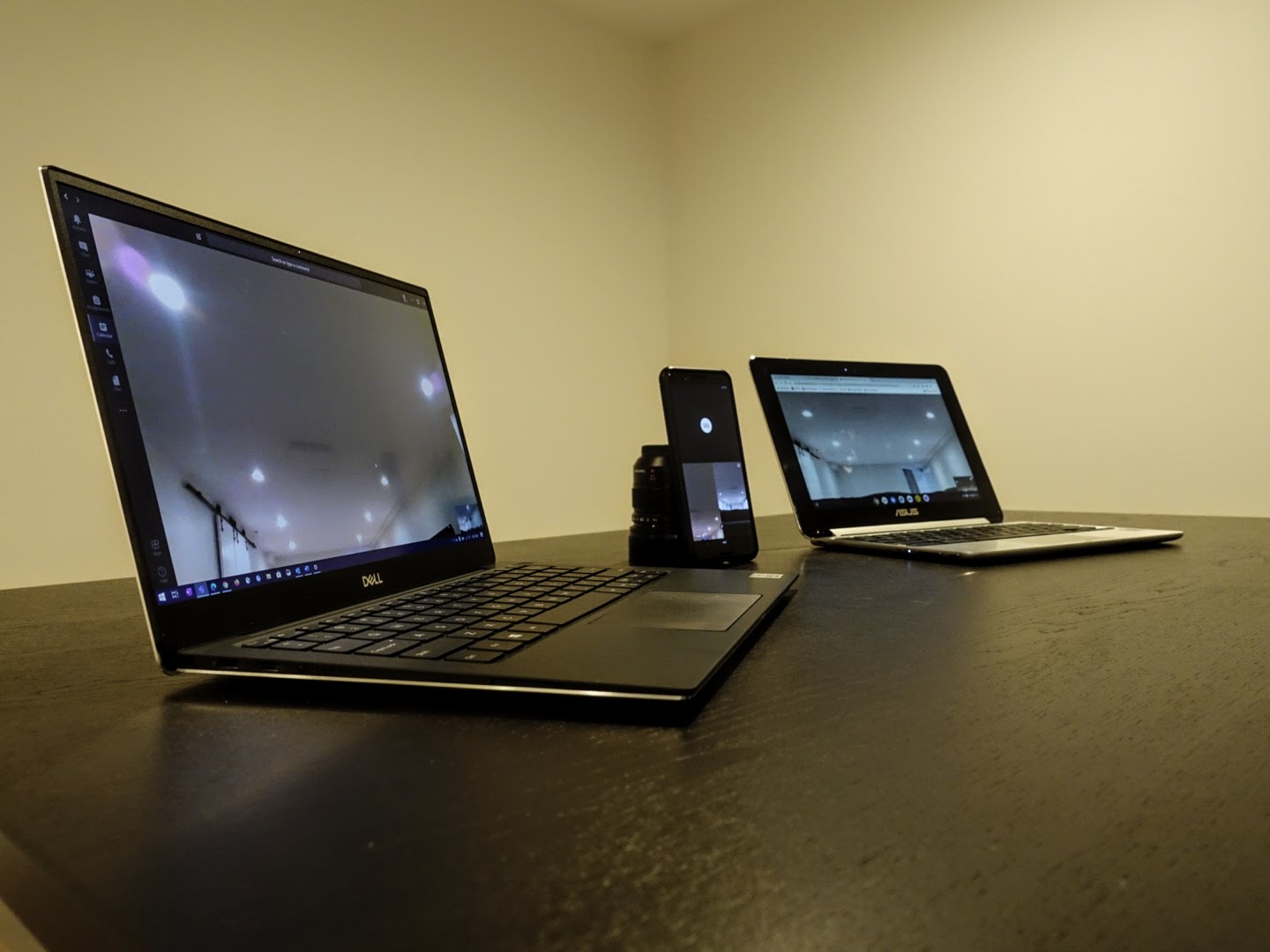 With any of the online meeting options, making sure that one’s microphone and webcam are working are usually the biggest trick. Unfortunately, everyone participating will need to go through and make sure that their own microphones and webcams are working. As the host, prepare ahead of time. Do a test meeting (or two or three) to ensure that the camera and mic are working and that you know how to create the event. You can do this with a friend or colleague or even by yourself with another email address.
With any of the online meeting options, making sure that one’s microphone and webcam are working are usually the biggest trick. Unfortunately, everyone participating will need to go through and make sure that their own microphones and webcams are working. As the host, prepare ahead of time. Do a test meeting (or two or three) to ensure that the camera and mic are working and that you know how to create the event. You can do this with a friend or colleague or even by yourself with another email address.
Assume that your first meeting with each group will be spent troubleshooting these kind of issues with participants.
Your “studio”
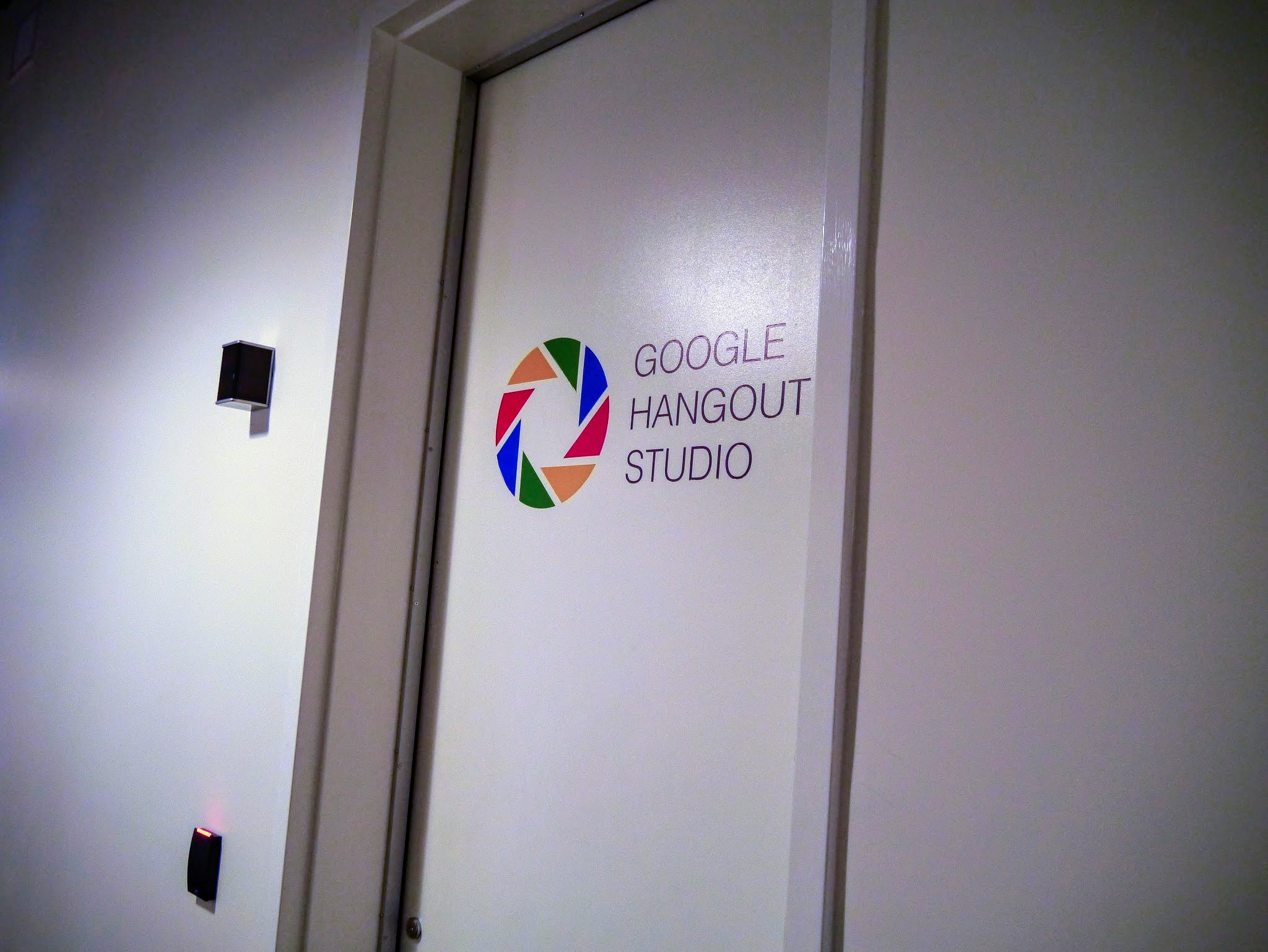 At tech companies, there are often special rooms set aside for conducting video meetings. Most educational institutions are not so lucky, and even fewer educators have a location at home that is already prepared for video meetings and classes. Do a pick location that is quiet from which you can consistently lead and participate in video chat meetings and classes. Make sure that there is more light shining on your face than there is behind you–For example, avoid sitting in front of a window as the backlighting will make you simply appear as a shadowy figure, and those in the video chat session with you will not be able to see your facial expressions (which is part of the point of a video meeting).
At tech companies, there are often special rooms set aside for conducting video meetings. Most educational institutions are not so lucky, and even fewer educators have a location at home that is already prepared for video meetings and classes. Do a pick location that is quiet from which you can consistently lead and participate in video chat meetings and classes. Make sure that there is more light shining on your face than there is behind you–For example, avoid sitting in front of a window as the backlighting will make you simply appear as a shadowy figure, and those in the video chat session with you will not be able to see your facial expressions (which is part of the point of a video meeting).
Use wired headphones with a built-in microphone for the best audio quality. A pair of headphones from an older smartphone works great. This simple, inexpensive step makes a huge difference!
Features to use and practice with the group
Once you have do have everyone in a meeting together with functioning microphones and webcams, take some time to walk people through the features you will be using. These might include:
- Using a chat box or virtually raising a hand to talk or ask a question
- Muting and un-muting one’s microphone
- Sharing one’s screen and handing off control of the presentation to different people in the group
Of course, if you are recording the meeting, please be clear with all participants that you are doing so!
March 2020Learning at Home – Using Twitter to learn more
We’re collecting questions about Learning at Home from teachers at all levels, and we’ll be working with experts to help get these questions answered. If you have questions, please provide them here.
On Friday afternoon, March 13, 2020, Governor Pritzker announced that all Illinois schools would be closing for a week and a half at a minimum. In advance of that, over 100 of Illinois’ approximately 850 school districts had already announced closures. (See this website from the Illinois State Board of Education for more information – Scroll down to view their dashboard.) Some of these closures have been announced into mid-April. This same pattern is taking place throughout the United States and across the globe.
Follow #KeepLearning #LearningAtHome #elearning & #ILEdChat on Twitter
With the unprecedented move to Learning at Home in the face of COVID-19, resources and ideas are being widely shared, most notably on Twitter. As was shared in our previous post, encouraging teachers to actively engage with a PLN through Twitter can generally result in positive innovation and sharing, but such engagement is incredibly critical at this time–and will continue to be beneficial after we have completed the quarantine period. Even if you are an educator who is not on Twitter, clicking on the links for each of the following Twitter hashtags (a way of labeling and organizing content on Twitter) will allow you to scroll directly through the questions, answers, and resources being shared.
Once you are in the hashtag search (which you can also access on your own by using Twitter’s search bar and simply typing in the hashtag), you will see a number of tabs near the top of the page:
- Top
- Latest
- People
- Photos
- Videos
Of these, the two most useful are, as you would expect, Top and Latest. Top tab will show you the posts garnering the highest level of engagement on Twitter, which is defined as a mix of replies, retweets, and likes. The Latest tab will show you the most recent posts in chronological order. In either case, start reading at the top of the tab and scroll down as you read. Clicking on links as you read will allow you to access that information, and the links will conveniently open in new tabs in your web browser, so you don’t lose your place.
By the time you have scrolled through a portion of the list, there will likely be new tweets to view at the top.
Follow the Illinois Digital Educators Alliance Twitter account – @ideaillinois
IDEA Illinois is one of the leading chapters of ISTE (International Society for Technology in Education) in the world, and as expected, they are taking a leadership role in providing resources regarding E-Learning to educators at all levels. If you have a Twitter account, you can follow @ideaillinois, by typing @ideaillinois in the search bar, and then clicking the “Follow” button. Even if you do not have a Twitter account, you can click here to follow @ideaillinois.
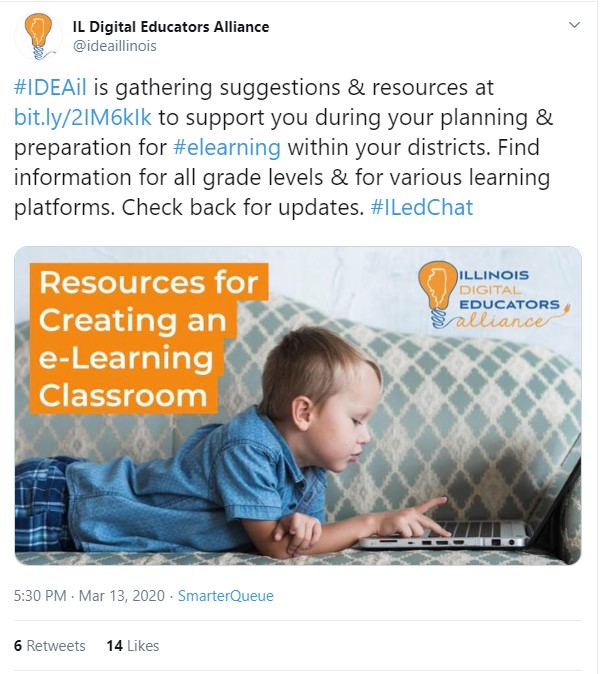
IDEA Illinois is tweeting thoughtful questions and resources throughout the day each day and using the hashtags #elearning and #ILEdChat. Additionally, they are providing advice and gathering curated resources on this page on the IDEA Illinois website. (This page is being updated regularly, so keep checking it.)
Ask questions and share
Even if you are new on Twitter and even if you have very few followers, don’t be afraid to ask questions and share resources that you and your team have found or created. If you use the hashtags listed here (by simply typing them in with the # at the start and all one word–exactly as they are written in this post), you’ll likely get responses even with very followers.
Additionally, as you find others who are tweeting helpful information, click on their Twitter handle to go to their account click the “Follow” button to start to build up individuals and organizations that you are following directly.
March 2020E-Learning Tips for Learning at Home
We’re collecting questions about Learning at Home from teachers at all levels, and we’ll be working with experts to help get these questions answered. If you have questions, please provide them here.
As school districts and postsecondary institutions across the P-20 Network, throughout Illinois, and around the United States and the world have had to rush to implement e-learning days in an effort to promote public health and slow the spread of COVID-19, teachers and faculty members are having to quickly grapple with days, weeks, or months of teaching online when they were previously planning to be working face-to-face with students in a more traditional learning setting. With the main goal of improving learning for all learners and supporting educators in that work, the P-20 Network will continue to seek to collect and share resources to make online learning as productive and efficient as possible for both students and their teachers. Initially, we’ve collected some tips and resources that may be helpful.
Engage students in impacting what & how they are learning online
Student scholars, we are assessing your needs, so we are 100% ready for an e-learning rollout. See you tomorrow. #TeamPhenomenal215 https://t.co/r4BYKOtcl5
— Teresa Lance, Ed.D (@teresa_lance) March 12, 2020
As Thornton Fractional School District 215 Superintendent Teresa Lance demonstrates in the above tweet, it is critical that, from the start, teachers are transparent with students about this being a learning process for everyone. Doing so can serve to build community despite not being physically in the same location, an important social and emotional prerequisite for learning, and it can allow students to brainstorm and develop ideas that will actually improve instruction. Teachers can and should ask about:
- Which online learning tools are most and least effective and why
- Which activities are most engaging and why
- How students have successfully created an environment at home in which they can learn (and where they are struggling with this)
Whether in-person or online, teachers should also create as much opportunity as possible for students to explore what deeply interests them about their curriculum, to read both fiction and non-fiction that is most relevant to their lives and appropriately challenging for them, and to create products that have real audiences and purposes. Education Pathway students at Buffalo Grove High School created this e-learning guide for teachers as part of their classwork, and it was widely shared via Twitter to help educators worldwide.
Discussions of E-Learning practices create an opportunity to reflect on our practice. Is our classroom driven by the teacher in front, or the students? Do we provide room for student interest and student voice? Attached are some ideas… https://t.co/wZ7dGwBc5y
— Mr. Koz (@KozKnowz) March 11, 2020
Connect with teachers worldwide
From early childhood educators through university professors, when teachers collaborate with other educators, they experience higher levels of self-efficacy, have greater job satisfaction, and most importantly, they are most likely to have a long-term and significant positive impact on student learning. For teachers who have not previously been on Twitter or for those who engaged in a professional development workshop regarding Twitter eight or nine years ago and who have not been back, now is the time to jump in.
Resources regarding how to provide instruction online have been shared widely as schools in other countries closed their classrooms weeks and months prior to schools in the United States. Additionally, there are already countless experienced teachers of online and blended learning courses who are active on Twitter and can help support teachers. In the example below, Adrienne Michetti, a Canadian who teaches in Singapore, and who has been an active educator on Twitter for over a decade demonstrates the profound power of being willing to ask for help from others in her professional, personal learning network.
Dear teachers who have been doing #remotelearning for a while now: do any of you have a planning document you might share? I’m looking for examples of a collab planning doc of a week’s worth of lessons, or an entire unit. We’d like some mentor texts! Thanks in advance!
— Adrienne Michetti (@amichetti) March 13, 2020
Responses included the following resources:
- Ciara Fitzpatrick’s Google Doc for her elementary school students to walk them through online learning activities (Follow Ciara on Twitter!)
- Online Learning – Don’t Panic, Prepare – #AltSXSWEdu Slide Deck (@MsReyna2 teaches in China – Follow on Twitter for more great resources and sharing!)
- #remotelearning – It’s happening... – Blog post from Langwitches – The Magic of Learning
Finally, even if you are new to Twitter and to teaching students online, don’t be afraid to share and ask questions!
Be realistic about students’ learning environments
 While Comcast has announced free Internet for low income families through their Internet Essentials program for 60 days, this service is not available in all areas–particularly rural areas. Even in areas where it is available, in many apartments, cables need to be run and modems deployed and set-up. In other words, many students will not even have Internet access. Even if 90% of your students have Internet access at home – 2-3 students per class on-average will not have Internet access.
While Comcast has announced free Internet for low income families through their Internet Essentials program for 60 days, this service is not available in all areas–particularly rural areas. Even in areas where it is available, in many apartments, cables need to be run and modems deployed and set-up. In other words, many students will not even have Internet access. Even if 90% of your students have Internet access at home – 2-3 students per class on-average will not have Internet access.
For families and students using mobile devices to do their work, they face the additional change of costly data caps, and many do not have or cannot afford to use that device as a hotspot. (They are very limited in how many YouTube videos they will be able to watch to complete assignments over the weeks that schools and colleges/universities are closed. And, could you imagine typing a long-form writing piece on the small, glass keyboard on your phone.)
To help with this, survey your students using a private Google Form or Microsoft Form to learn about where in their home they will be working, what kind of Internet access they have, what distractions they will face trying to learn at home, and what other responsibilities they will have in their families at home during the “school” day. In addition to giving you actionable information, this will also allow students to reflect on these points and start to develop plans and solutions where possible.
Nevertheless, it is critical that teachers adjust expectations in accordance with these realities. To think that students will be able to do their normal 8.30 AM to 3.30 PM school day at home in the same way that they do it school creates an unrealistic foundation for trying to successfully “do” learning online.
Expect yourself to learn – and give yourself permission to do so
The greatest teachers are always learning, and everyone one of us will definitely learn when moving to online teaching. Even experienced online educators speak openly about how challenging it can be do effectively, and teachers who are new to it with little time for preparation need to be gentle with themselves regarding this reality. Understanding your students’ needs and current situations, taking instructional risks, and being transparent and open with students (and consistently gathering feedback from them!) throughout the online learning experience will go far in creating the best possible learning experience for students and upon which further improvements to future online learning can be made by teachers.
March 2020Lake County Tech Campus – Creating a Team-Based Challenge
The Lake County Tech Campus provides a wide range of Career and Technical Education (CTE) programs to high school students from throughout Lake and McHenry Counties in Northeastern Illinois. Education is one of the many high quality career areas in which programming is offered at Tech Campus, with a team of three teachers who provide instruction for juniors and seniors in high school. These students, in turn and alongside their professional teachers, provide instruction and learning opportunities three days per week for early childhood students in the specifically designed early childhood classrooms at Tech Campus.
 As part of this work, the Education teacher team decided to incorporate Team-Based Challenges from the Illinois Career Pathway Endorsement model, and the P-20 Network team both facilitated the instructional planning and participated in this effort alongside the Education teachers. The Education teachers identified two potential real-life, complex problems of practice that they believed an in-depth Team-Based Challenge would help their high school students learn and solve and through which they could develop a deeper understanding as potential pre-service teachers. Together, we spent one entire “professional development day” building out the Team-Based Challenge.
As part of this work, the Education teacher team decided to incorporate Team-Based Challenges from the Illinois Career Pathway Endorsement model, and the P-20 Network team both facilitated the instructional planning and participated in this effort alongside the Education teachers. The Education teachers identified two potential real-life, complex problems of practice that they believed an in-depth Team-Based Challenge would help their high school students learn and solve and through which they could develop a deeper understanding as potential pre-service teachers. Together, we spent one entire “professional development day” building out the Team-Based Challenge.
First, we explored the key College & Career Pathway Competencies that would be taught and on which students would be assessed. Specifically, both the Essential Cross-Sector Employability Competencies as well as the Human and Public Services Career Pathway Competencies (which are currently defined through EDU-specific competencies) were studied and discussed. After examining all of these competencies, the teachers specifically identified the ones that would be best taught and assessed through the Team-Based Challenge.
Then, the teachers determined how they would assess each of these competencies as well as, through that discussion, beginning to plan instructional lessons and activities that would be embedded in the Team-Based Challenge.
Finally, using the Backwards Design Model of instructional planning, multiple assessments were fully built-out prior to the end of the professional development workday.
Ultimately, in one day, the teachers learned more about the Career Pathway Endorsements, identified the competencies that would be taught and assessed, created those specific assessments, and outlined a two-week instructional unit that would serve as a Team-Based Challenge.
For more information about Career Pathway Endorsements or to reach about arranging for professional development and planning support around the Career Pathway Endorsements and Team-Based Challenges, please contact either Brooke (bsimon3@niu.edu) or Jason (jason.klein@niu.edu) at the P-20 Network.
March 2020Illinois Postsecondary Profiles continues feature roll-out
Have you visited the IllinoisPostsecondaryProfiles.com website yet? Have you shared it with your school counselors and academic advisors? Students and parents?
The Illinois Postsecondary Profiles website brings together data from across multiple agencies in one interactive, easy-to-use website. Currently, visitors to the site can explore the full range of postsecondary institutions in Illinois.
New features that we want to highlight for end users includes:
- Download the Data – Researchers can download the data from across the site into a spreadsheet file with the link at the bottom of each page.
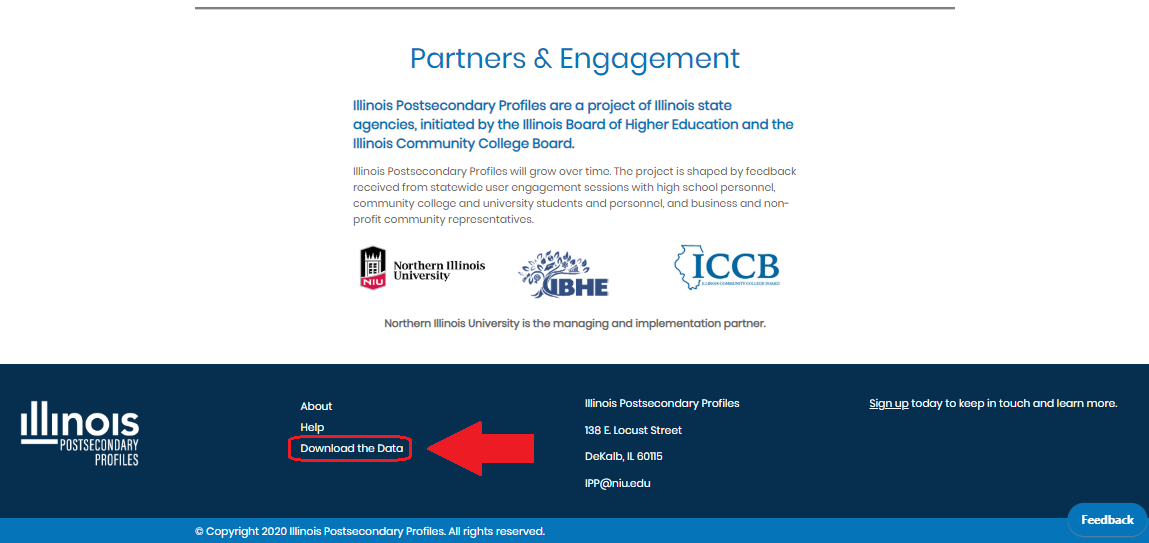
- Print and/or Export Data on a particular screen – Users can also take what they see on their own computers and print or export to a spreadsheet for future reference.
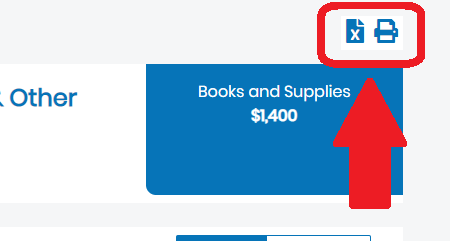
What’s coming next?
The next phase of the website, which is under development, will allow users to explore occupations and areas of study.
The Illinois Postsecondary Profiles website is a collaboration of the Illinois Board of Higher Education and the Illinois Community College Board, and it is developed and managed by Northern Illinois University’s Illinois Interactive Report Cards.
February 2020PASS Summit again brings educators together to focus on College and Career Readiness
The Sauk Valley Partnership Advocating Student Success (PASS) hosted their 5th annual College and Career Readiness Summit on Friday, February 7, 2020 at Sauk Valley Community College. The day highlighted the combination of policies, programs, partnerships and practitioners in pursuit of a community-focused approach to college and career readiness. Highlights from the day include the keynote from Tim Farquer, Superintendent and Curriculum Director for Williamsfield Schools, one of the first competency-based pilot schools. Tim explained how the district focus on students attaining needed skills, completing career pathways and participating in local partnerships has resulted in the number of students meeting or exceeding state standards rising from 34% to 50% in the past four years. Instead of arranging students by age, students are arranged according to graduation outcomes. Students can choose to complete an associates degree by the time they graduate from high school, college credits, trade certifications or work-based experiences.
Another key to the attainment of competency-based education is identifying acceleration points in various subjects. When students reach these benchmarks, they identify opportunities to accelerate through work that they have already learned. A continual focus on “this is where I am but this is where I want to go and this is how I will get there” has permeated the district such that even parent conferences are now led by the students themselves.
Tim states “Our approach to career pathways leverages student’s passions to drive core skills farther & faster, positioning themselves for success after high school.” For more information about competency-based education in Williamsfield, contact Tim Farquer at tim.farquer@billtown.org
The day also included “policymaker speed dating” in which state and local policy-makers met with practitioners in a round-robin format. Policymakers answered questions about how practitioners and policymakers can work closely together and then listened to the practitioners’ perspective on the issue. Topics included competency education, students ready for life after graduation, career pathways, limitations of rural settings, and more. Janis Jones said, “The structure of policy speed dating forced participants to be thoughtful and articulate in their comments. It allowed policy makers to hear directly from those who attempt to implement the policies, and created great dialogue. Both sides benefited.”
Business and industry representatives joined the group for lunch and then the afternoon included several break out sessions. Topics ranged from learning more about Transitional Math to Career Pathway Endorsements to the IllinoisPostsecondaryProfiles.com website. These breakout sessions not only provided conference attendees with opportunities to learn from the presenters, but there were also many instances in which great value also came from what educators shared with one another through discussion.
Sauk Valley Community College and Regional Office of Education 47 (Lee, Ogle, and Whiteside Counties) ended the day with an announcement that they had been awarded funding through the Illinois Community College Board’s Transitional Instruction-English Pilot Project grant. Click here to read more and to view the grant awardees from across Illinois.
February 2020Focusing on Career Pathways with an emphasis on individual students’ plans
Belvidere School District 100 has been focused on putting each piece in place to support students’ engagement with the College and Career Pathways.
One of the early key steps in this work was exploring the “crosswalk” (pictured below) between the Postsecondary and Career Expectations Framework (PaCE), the Illinois State Board of Education’s College and Career Readiness Indicators (CCRI), and the College and Career Pathway Endorsements (CCPE) outlined by the Postsecondary Workforce Readiness (PWR) Act.
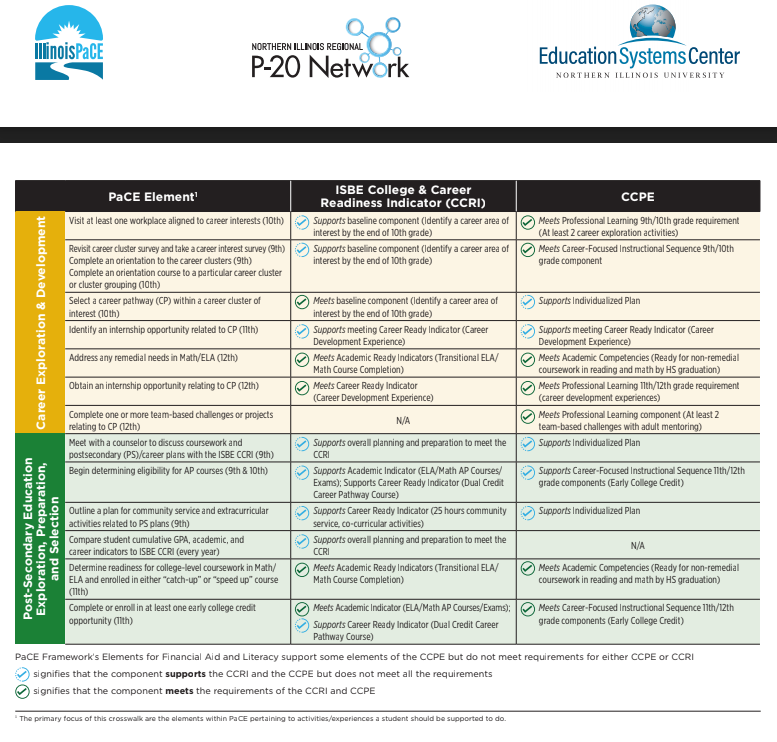
Belvidere School District 100 knew that they wanted to support student learning and exploration with the Career Pathways and to ensure that students had the requisite knowledge and skills to be successful beyond high school – in postsecondary education and in the workforce. Nik Butenhoff, Director of Career Readiness, said the the framework crosswalk, “supported the hunch that we had. This was the evidence that if we have to track the College and Career Readiness Indicator (for the State), if we just go all-in for the Endorsements, we will then land on the work that we needed to support the Indicators.”
Nik goes on to point out that this work is central to the efforts of teachers and administrators in Belvidere to improve learning, “The stuff that the State is giving us; this is good. These frameworks show how its all intertwined with each other. It is not separate initiatives, but it’s all connected.”
Belvidere School District 100 has developed its own graphic to show the importance of individual planning with each student. The State’s College and Career Pathway Endorsement graphic, which is linked above, also places individual planning at the top of the framework, but the Belvidere viewpoint is to stress it even further as pictured below with the “Individualized Plan” section wrapping around each of the key components.
In addition to this, students are asked to be thinking about their College and Career Pathway in a number of different ways. One small, easy, yet very powerful, example of this is on student’s Course Selection Form (pictured below). As student’s consider what courses they are requesting for the following school year, they are also asked to think about their desired College and Career Pathway Endorsement area.
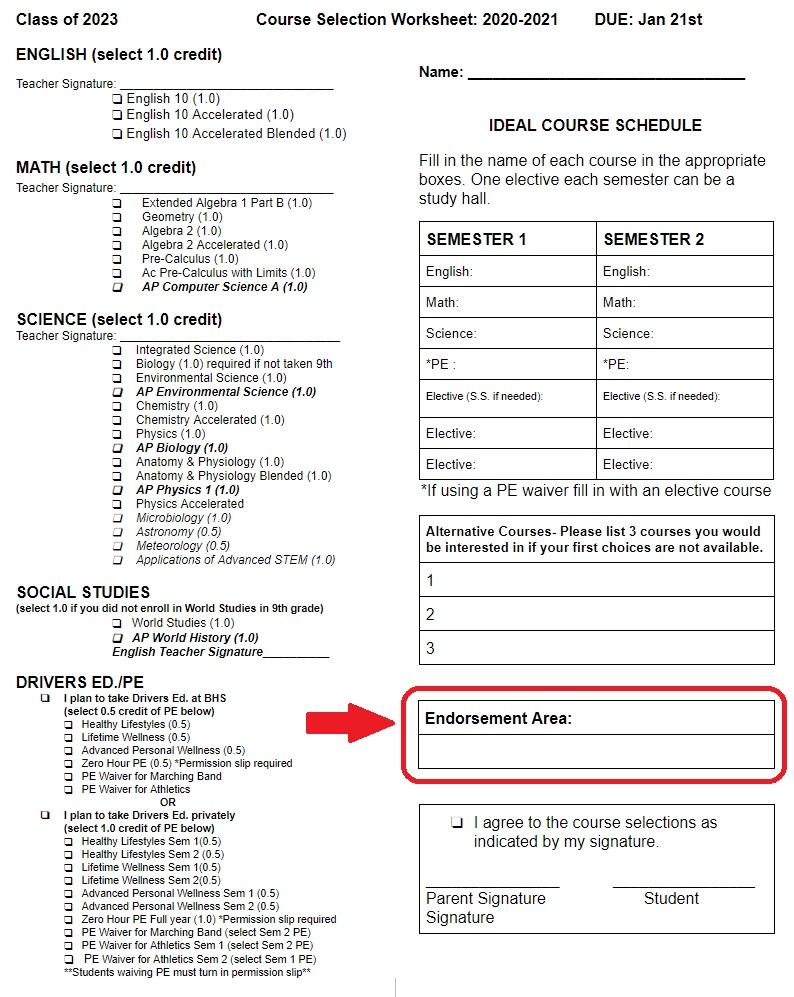
In addition to these strategies, the posters pictured with this post are up in the high schools and the middle schools to help students consider the Pathways as they move through the day, and the District 100 Career Guide is offered to students and families in both English and Spanish.
Possibly the most important component in helping make the College and Career Pathways begin to come alive for high school students in District 100 is that all ninth graders are required to complete a Freshman Careers Course, during which a wide range of career exploration and skill-building activities take place.
January 2020Survey – What support do you need with Perkins V?
The Illinois State Board of Education (ISBE) and the Illinois Community College Board (ICCB) jointly implement Perkins V and they continue to provide resources for school districts, community colleges, and EFEs to move through the Perkins Grant process successfully. The following websites include resources and support documentation from these state agencies:
Based on feedback from school districts and community colleges, Education Systems Center, the Center for Governmental Studies, and the P-20 Network, all based out of Northern Illinois University, are seeking to determine if there are additional needs related to the Perkins V processes, and if so, how our organizations may be able to assist. This short survey is designed to provide that feedback to know what needs may exist that require additional support.
January 2020Career Pathways Endorsement – Mapping out the course sequence well in advance in Naperville 203
While the Class of 2020 is the first group of students in the State of Illinois that can earn Career Pathway Endorsements, data gathered across the P-20 Networks suggests that very few students will earn Career Pathway Endorsements this coming spring. At the same time, many school districts are deeply engaged in providing career-focused experiences for students and working toward the full implementation of Career Pathway Endorsements with the following critical elements:
- a sequence of courses aligned to the Career Pathway Endorsement including courses that will offer the possibility of at least 6 hours of postsecondary credit (Dual Credit or Advanced Placement)
- a minimum of 2 Team-Based Challenges that students can experience either through instruction in the aforementioned courses or through extra-curricular activities or other outside experiences
- an in-depth work-based learning experience of a minimum of 60 hours (or 2 micro-internships of at least 30 hours each)
Though, like most school districts, Naperville Community Unit School District 203 does not plan on having students graduate with Career Pathway Endorsements for a few years, the District has already mapped out course sequences for Career Pathway Endorsements. Pictured below is a bulletin board in a hall at Naperville Central High School that outlines two different course sequences for students to work toward an Career Pathway Endorsement in Information Technology.
While educators in Naperville continue to build out other critical elements of the Career Pathway Endorsement, from the outset of their high school experience, students can be inspired by and begin to plan to participate in one of these entire course sequences.
There are a few important lessons from this:
- It’s not too early to plan out course sequences, which can be done at any time, even if you are not able to fully implement the course sequence this year.
- Planning a course sequence early can result in being better able to prepare facilities, equipment and supplies, and professional development well in advance.
- Once a course sequence is planned, it can be shared widely with students and families in order to help them both develop a general awareness of Career Pathway Endorsements and to be able to consider specific course sequences as students are selecting courses (and “trying on” different career ideas).
Team-Based Challenges – The Key Elements
At the Fall 2019 P-20 Network Meeting, participants worked together to define the critical elements of a Team-Based Challenge as well as ideas for Team-Based Challenges that can be implemented with partners in our communities within each of the Career Pathways. Following the P-20 Network Meeting, we took the ideas from the meeting to draft a document that outlines the best practice “Elements of a Career Pathway Endorsement Team-Based Challenge.”
A Career Pathway Endorsement Team-Based Challenge is a self-contained exercise that may vary in length and structure ranging from an individual activity to an instructional unit.
A Team-Based Challenge should require students to utilize and demonstrate competency with work-based knowledge and skills as they work to solve an authentic work-based problem as members of a collaborative team.
Career Pathway Endorsement Team-Based Challenges should include the following features:
- Challenges seek solutions to authentic problems that are identified from and/or in collaboration with industry partners, are regionally relevant and globally connected, and result in a real solution that can be applied and implemented in the “real world”. As part of or in addition to the solution/product, students must complete a presentation of their solution and its application to an authentic audience.
- Students work in collaborative groups to solve the problem.
- Students are supported by an expert mentor from the field. If possible, experts should also be present for student presentations at the culmination of the Team-Based Challenge.
- Challenges require students to demonstrate key technical, employability, and entrepreneurial competencies. Successful demonstration of the competencies through a Team-Based Challenge is typically represented through a rubric and/or another form of authentic assessment.
Additionally, we are working with faculty and staff at Northern Illinois University as well as with teachers and administrators in school districts to help develop and document Team-Based Challenges. We look forward to sharing those stories and resources to help with the creation of Team-Based Challenges over the coming weeks and months. In the meantime, if you are interested in developing Team-Based Challenges in order to help further learning toward the Career Pathways in your organization as well as to develop capacity with authentic, problem-based learning, please contact the Illinois P-20 Network, and we will be happy to set-up time for support.
November 2019The Career Development Toolkit from Ed Systems Center
Through a collaboration with the Illinois State Board of Education and the Illinois Department of Commerce and Economic Opportunity, Education Systems Center has released the Career Development Toolkit. The Toolkit is aligned to the frameworks established in the Postsecondary and Workforce Readiness (PWR) Act. The Career Development Toolkit provides a comprehensive framework and roadmap for helping educators through all of the steps and considerations in providing meaningful career experiences – from the creation of internships that align with the Career Pathway Endorsements to thinking through necessary detailed logistics.
For support in using the Career Development Toolkit and in implementing Career Pathway Endorsements, contact us or Heather Penczak at Northern Illinois University’s Education Systems Center.
November 2019Illinois Report Card Launches with new data
The Illinois Report Card has been updated and released with its annual refresh of new data and, in this year’s case, some additional data. The Illinois Report Card provides schools and other stakeholders a wide range of data to provide insight into trends in and across schools. The Illinois Report Card is overseen by the Illinois State Board of Education and implemented by the Illinois Interactive Report Cards Office at Northern Illinois University. Each year, as required by law, the Illinois Report Card is released with data from the previous school year at the end of October.
This year, the major new data element includes site-based expenditure data, which was reported by school districts for each school to the State for the first time based on the requirements of the federal Every Student Succeeds Act (ESSA).
This data shows the overall amount spent by school, and this has garnered widespread reporting from media outlets throughout Illinois; This article from the Daily Herald is just one example.
In addition to the inclusion of the site-based expenditure data, there is a whole range of additional changes to the website from the addition of growth data on the Illinois Assessment of Readiness (IAR) to new fields that can be used to disaggregate data to an updated color scheme. A full list of updates can be found here in the 2019 Illinois Report Card Release Notes, which are also published on the Illinois Report Card homepage.
October 2019Hinckley-Big Rock – #AuthenticLearning with Agriculture and Beyond
Hinckley-Big Rock School District 429 is situated in the countryside between Aurora and DeKalb, Illinois. Hinckley-Big Rock has been a leader statewide in building a strong foundation for all students with career readiness and postsecondary options through its implementation of the HBR Career Readiness Plan. This plan, which builds skills and experiences for students from elementary school through high school, was developed within the school district and is based on the Illinois Postsecondary and Career Expectations (PaCE) Framework.
Not only has Hinckley-Big Rock invested a great deal of time and energy in ensuring that students have experiences and skills to help them make choices about careers and postsecondary learning, but Hinckley-Big Rock also seeks to provide students with authentic learning experiences in which their “classwork” is “real work”. While this is desired across the curriculum and all courses, these efforts are most noticeable within the Agriculture, Food, and Natural Resources Career Pathway.
Like many school districts in Illinois, Hinckley-Big Rock has a rich history with providing students with authentic learning experiences through extra-curricular activities. With the understanding that such experiences can lead to deeper, more complex and longer lasting learning, ensuring that students learn through authentic problem-based units and lessons is a priority. Hinckley-Big Rock is furthering these efforts with a multi-year initiative to take advantage of the size of its property and expand the resources available for student learning on the working farm on the east side of the high school building.
Over the past couple of years, a small orchard has been planted and water and electrical have been added and/or upgraded. Next, a building will be added to support the fully functional agricultural operations in which students participate as part of their coursework and learning.
Being able to fully experience the work allows students to learn both career-specific knowledge and skills as well as develop the type of skills that are needed across careers as defined by the Cross-Sector Essential Employability Competencies (see page 6 of this PDF).
These efforts are not limited to just agriculture nor Career & Technical Education (CTE) courses at Hinckley-Big Rock, but they are also noticeable outside the building as Indian Valley Vocational Center CTE students also construct the actual dug-outs that generations of student-athletes will use for decades to come.
October 2019Illinois Postsecondary Profiles website launches
This week, the Illinois Postsecondary Profiles website publicly launched. The website is a joint effort of the Illinois Board of Higher Education and the Illinois Community College Board, and it is being implemented by the Illinois Interactive Report Cards Office at Northern Illinois University as is the Illinois Report Card website for school districts throughout Illinois.
The Illinois Postsecondary Profiles website brings together a wide range of data from a variety of sources and presents it in new informative ways for postsecondary institutions across the State of Illinois in this first phase of its roll-out. You can view this information by institution as pictured below.
You can even view information across institutions at the same time using the View schools side-by-side button as pictured below.
Future updates for the Illinois Postsecondary Profiles site are planned. The additional functionality that will result from these releases includes the ability to:
- Explore the data by occupation/major interest area
- Investigate the experiences of different groups of people in pursuit of their dreams!
We look forward to providing additional updates on these developments through the P-20 Network in the coming months and years.
October 2019Rochelle – Mapping out success for the future during high school
Like other schools, Rochelle Township High School District 212 has embarked on a focus to ensure that all of its students are thinking forward beyond high school while they are still in high school. This effort is focused both on helping ensure that students know, understand, and have a variety of postsecondary options while also participating in significant and ongoing planning and counseling during high school.
At Rochelle High School, which is located about 20 miles directly west of DeKalb, Illinois, a series of key indicators for future success have been identified, and together these have been termed the Tomorrow Readiness Student Profile (pictured here below).


Following each semester, student information in the Tomorrow Readiness Student Profile is updated by school staff and shared with all students and parents. This ongoing education allows students and parents to keep up-to-date on their progress, and it has the secondary benefit of making the Tomorrow Readiness Student Profile a living tool in the lives of students and families.
Many schools and school districts are embracing the creation of a holistic view of a student that includes learning critical skills that go beyond traditional academics. For example, one way that these are now defined in Illinois as a result of the Postsecondary & Workforce Readiness Act is through both the Cross-Sector Essential Employability Competencies and the Entrepreneurial Competencies (see page 6 of this document). Rochelle has included these skills that are so critical for both careers and citizenship as the Efficient, Adaptive, and Self-Reliant Learner Behaviors. Where Rochelle goes one step further is by having teachers assess students in each of these areas and, most importantly, asking students to self-assess in each of these areas.
Alongside what courses a student has taken and their personal and career interests, the Tomorrow Readiness Student Profile provides a strong foundation on which students and their families, counselors, and teachers can engage in detailed discussions about both an individual student’s strengths as well as the target areas for additional growth during their high school experience and beyond.
October 2019


